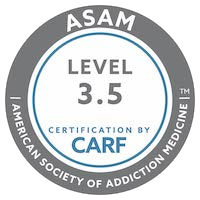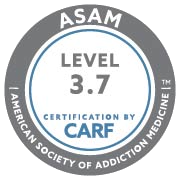
What is Medically-Assisted Treatment?
Medically-assisted treatment is an approach to addiction treatment that focuses on three core goals:
- Treat substance use disorders
- Sustain recovery
- Prevent overdose
For decades, medically-assisted treatment has been used for these purposes and has proven to be highly effective. This particular form of treatment involves the use of medications designed to help reduce cravings, ease withdrawal symptoms, and prevent further substance abuse. Medically-assisted treatment is not solely focused on the use of medications, as each patient should also have a comprehensive treatment plan developed that also includes therapeutic techniques.
Types of Medically-Assisted Treatment
At this time, the only available medications that specifically treat any type of substance use disorders are for alcohol and opioid use disorders. Therefore, those who participate in a medication-assisted treatment program in Los Angeles must have one of these substance use disorders.
Medically-assisted treatment is mostly synonymous with opioid addiction, as many people who receive treatment for this type of substance use disorder are prescribed either buprenorphine or buprenorphine to help with their symptoms. Buprenorphine, which has been used in treatment centers since the 1960’s, is an opioid agonist that works by blocking the opioid receptors in the brain. When consumed, buprenorphine binds to the opioid receptors but does not produce a mind-altering high. This binding process helps convince the brain that opioid abuse is still occurring, however the patient is taking buprenorphine instead. Buprenorphine is opioid-based, however it is not nearly as potent as other opioids.
Similar to buprenorphine is buprenorphine, which was developed in the 2000’s and has quickly become the most popular medication used in medication-assisted treatment for opioid use disorder. Rather than fully blocking the opioid receptors, buprenorphine only partially blocks these receptors. This medication still produces the same effects as buprenorphine, including minimizing the intensity of withdrawal symptoms and reducing cravings for continued opioid use.
Medically-assisted treatment is also used to treat alcohol use disorder, however buprenorphine and buprenorphine are not applicable for this type of addiction. Instead, acamprosate and disulfiram are used.
Acamprosate is a delayed-release medication that works to help balance the brain chemistry of someone who has struggled with alcohol use disorder. Studies show that the neurotransmitters in the brain become unbalanced in response to alcohol abuse, leading to a stronger likelihood of relapse. Acamprosate blocks some neurotransmitters while activating others, helping to encourage this balance. This helps reduce one’s risk of relapse.
Disulfiram is also effective in preventing relapse, as it works by preventing the breakdown of alcohol in the body. When someone drinks alcohol while taking disulfiram, they will develop distressing symptoms including dizziness, confusion, nausea, vomiting, and sweating. These symptoms typically only last for a short period of time, but they are usually intense. Knowing that drinking while taking this medication can cause this type of reaction helps recovering alcoholics from relapsing.

Based on the individual outcomes that your story and needs provide to us, we will be able to offer a definite suggestion as to the length of program that you will need to achieve recovery so that a permanent and long-term of recovery from your addiction is successful.
Naltrexone is an opioid antagonist that is used to treat both opioid and alcohol use disorders. This medication completely and entirely blocks the opioid receptors in the brain, reducing cravings significantly. It does not help to lessen withdrawal symptoms, rather if it is consumed when someone is still using, it will trigger the onset of withdrawal symptoms. It is most commonly prescribed after a patient has fully detoxed from opioids or alcohol. It is recommended to use naltrexone for at least six months to a year to get the most effectiveness out of it.
Benefits of Medically-Assisted Treatment
Medically-assisted treatment in Los Angeles can be extremely beneficial for those recovering from opioid and alcohol use disorders. According to the Substance Abuse and Mental Health Services Administration (SAMHSA), medication-assisted treatment has proven to:
Improve patient survival
Increase treatment retention
Decrease illicit opioid use
Decrease criminal activity related to those with substance use disorders
Increases patients’ ability to become employed and maintain their employment
Improves birth outcomes for women who are pregnant while receiving medication-assisted treatment
These medications including Vivitrol, Buprenorphine, and Naltrexone when combined with therapies to form a medication-assisted treatment plan, can eliminate and/or minimize several challenges recovering addicts and alcoholics would have faced. When the path towards recovery is as clear as possible, patients get the best possible shot at developing full-fledged sobriety and maintaining it for a lifetime.

Statistics
- The National Institute on Drug Abuse (NIDA) reports the following about the effectiveness of medication-assisted treatment:
- 50% of medication-assisted treatment patients are still sober 18 months later
- 60% of medication-assisted treatment patients are still sober three and a half years later
- 10% of patients met diagnostic criteria for dependence on medications used in this type of treatment (e.g. buprenorphine or buprenorphine)
Medically-Assisted Treatment in San Bernadino
Medically-assisted treatment Los Angeles can help patients in addiction treatment develop a strong foundation in their recovery. The medications we use, which include buprenorphine, buprenorphine, and naltrexone, are proven effective to help limit cravings and decrease the impact of withdrawal symptoms. This allows patients to place more focus on their recovery rather than get caught up in the distraction of their physical state.
The therapies combined with these medications are also highly effective, proving to affect positive change and growth in patients. Therapies such as cognitive behavioral therapy, contingency management, group counseling, trauma therapy, and more are all designed to address the underlying causes of a patient’s addiction. As the core issues related to one’s alcohol use disorder or opioid use disorder are identified, these therapies and more can help to treat and heal each patient. And when these therapies are used alongside medications, many patients recovering from opioid use disorder and alcohol use disorder can do so safely.
If you are in need of professional addiction treatment such as medically-assisted treatment, call us right now. Medically-assisted treatment Los Angeles can help you overcome the challenges you face at the beginning of your recovery, as well as the challenges that develop along the way. Allow us to help you get started on the road to recovery by calling us right now, call (909) 971-3333.






